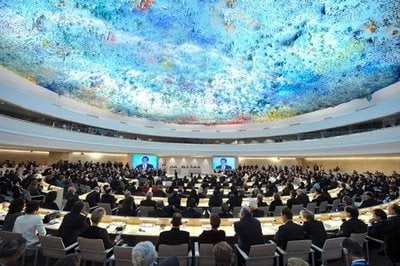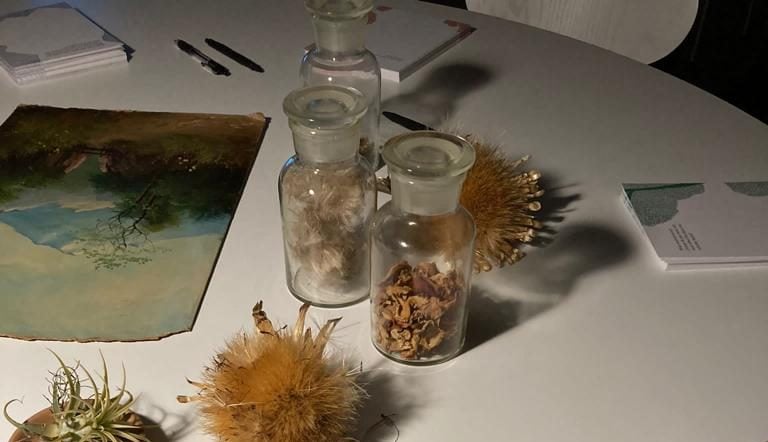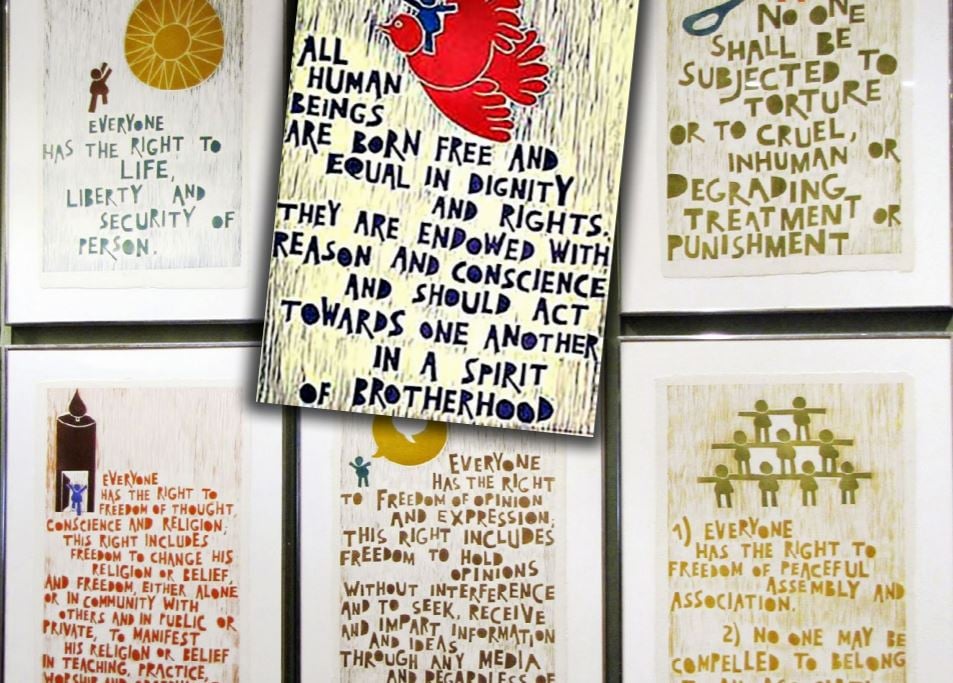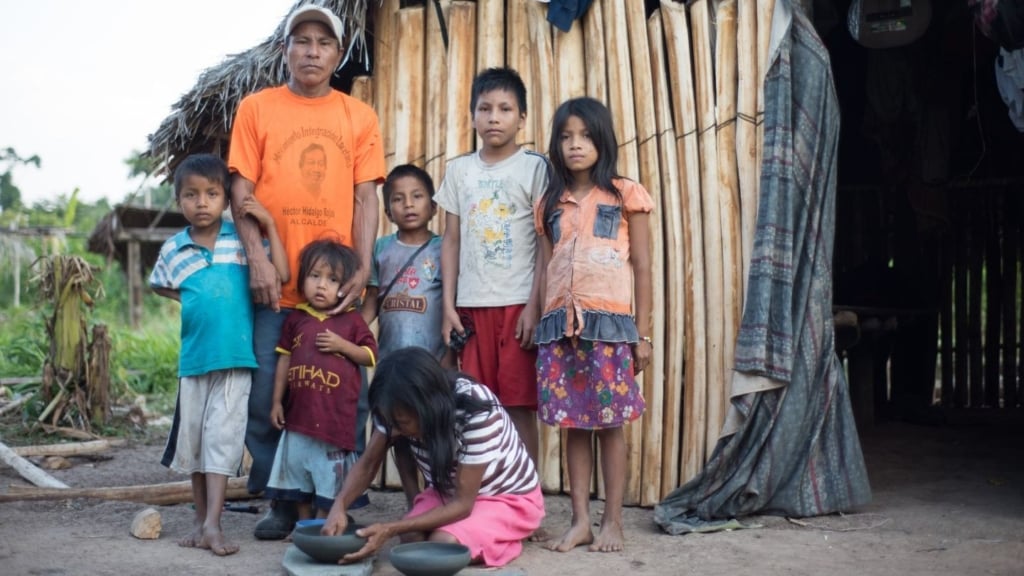Finland
-
Main languages: Finnish (88.3 per cent), Swedish (5.3 per cent), Russian (1.4 per cent), Sámi (0.03 per cent).
Main religions: Evangelical Lutheran Christianity (72 per cent), Finnish Orthodox (1.1 per cent).
Minority groups include: Swedish–speakers (5.3 per cent), Russian-speakers (1.4 per cent), Estonians (0.9 per cent), Roma (0.2 per cent, and Sámi (0.1 per cent).
Numbering around 8,000 people (with some estimates reaching 10,000), Sámi are the country’s only indigenous people. A sizeable number live in northernmost Lapland, in an area known as the ‘Sámi Homeland’, although more than 60 per cent now reside elsewhere in the country. There is a far larger population in Norway, and they also live in Sweden and Russia.
Roma of the eastern Kale group settled in Finland at the end of the sixteenth century. With a current population of around 11,000 people, they mostly live in urban areas.
Swedish-speakers live mostly in the coastal regions of Österbotten, Nyland and Åboland, and on the Åland Islands.
Russian-speakers are partly a historical minority and partly new immigrants, some with Finnish citizenship and some non-citizens. Russians who settled in Finland from the eighteenth century to the aftermath of the First World War are often referred to as Old Russians. The first group of Russians settled in the eastern province of Karelia. Old Russian communities in and around Helsinki, Turku, and Tampere are mostly the descendants of civil servants, officers and merchants who settled during the nineteenth century. They may also be the descendants of people who fled the Russian Revolution. The most recent group of Russians in Finland (called the New Russians) immigrated from the 1960s onwards and especially since 1991.
The number of Old Russians has been estimated at 2,500 to 5,000. Old Russians fall within the scope of Finland’s obligations under the Framework Convention for the Protection of National Minorities, the key European treaty on minority groups. Russian immigrants from the former Soviet Union do not. The Union of Finland’s Russian-Speaking Societies has criticized the division between Old Russians and so-called New Russians, made for the purposes of the implementation of the Framework Convention, as being at best artificial and misleading, and at worse unfounded and useless.
Jews first arrived in Sweden–Finland during the seventeenth and eighteenth centuries. Present-day Finnish Jews, estimated to number up to 1,800 people, are mainly descendants of later arrivals of Russian origin. In 1918, after Finland gained independence, Jews were granted full rights as citizens. The Jews moving to Finland in the eighteenth century spoke Russian and Yiddish and, upon settling in Finland, chose Swedish as their first language. In 1932 it was decided that the language of instruction at the Jewish school in Helsinki should be Finnish instead of Swedish. Jews have been basically bilingual, although younger generations have increasingly tended to be unilingual Finnish-speaking.
Islamic Tatars came to Finland from the Sergatch region on the Volga from the 1880s to the 1920s. They were merchants and settled mainly in the Helsinki area. In 1925, the founded the first Finnish Islamic congregation. According to government documents in 2007, Tatars number about 800, although the total number of Muslims in Finland (many of them recent immigrants from various countries in the Islamic world) is unofficially estimated to be around 60-70,000 people. Tatars have kept their Turkic language alive, using it mainly in family and private life. Their religious organization arranges the regular teaching of Turkic to children, and there are summer camp courses in Turkic.
-
Environment
Finland is located in northern Europe and shares land borders with Sweden, Norway, and Russia. The Åland Islands (off the south-western coast) have a special autonomy arrangement while remaining under Finnish sovereignty.
History
What is now Finland belonged to the Kingdom of Sweden from the twelfth century to 1809, when the area, including the Åland Islands, was ceded to Russia. Finland declared independence in 1917, and its 1919 Constitution gave it a parliamentary system with a strong presidency. Finnish and Swedish were both designated national languages. The Soviet Union was one of the first states to recognize Finland.
Finland experienced numerous conflicts during the first decades of independence. A civil war was fought in 1918 between forces loyal to the Social Democrats on the one hand, and the non-socialist conservative-led Senate; by the war’s end, almost 37,000 people had died.
In 1939, the Soviet Union invaded Finland, leading to the Winter War. Despite being considerably outnumbered, the Finnish forces were initially able to resist, using guerrilla tactics and their knowledge of the local terrain. Nevertheless, the war ended with a peace treaty that led to Finland ceding 9 per cent of its territory, including the country’s second largest city, Viipuri. 25,000 Finns died as a result of the conflict, and over 400,000 Karelians were displaced. In 1941, conflict broke out again between the two countries. This time the war lasted over two years with the opposing sides digging down, once Finland had regained territories which it previously ceded. In 1944, the Soviet army went on the offensive, forcing the Finnish army from most of the terrain it had regained. Conflict concluded later that year with an armistice, followed by the Paris peace treaty of 1947. Finland had to cede much of Karelia to the Soviet Union and pay reparations. Over 63,000 Finns died during this second conflict. Although Finland and Nazi Germany were co-belligerents and despite strong pressure from its ally, the Finnish government refused to take any action against its Jewish minority which continued to enjoy the full range of rights as other citizens.
Finland joined the European Union in 1995, and in the same year, the Sámi people were officially recognized as an indigenous people in the Finnish Constitution.
Governance
The Swedish language remains protected under provisions of the Finnish Constitution and language legislation as an official language alongside Finnish. Swedish schools and institutes of higher education continue to ensure the future of Swedish language and culture. However, emigration to Sweden and the low birth rate among Swedish-speaking Finns mean that the proportion of younger age groups is decreasing, leading to a population decline.
The Finnish Constitution recognizes Sámi as an indigenous people, as well as their right to cultural autonomy. However, prospects for Finnish Sámi, as for all Sámi, involve the struggle to maintain their culture as their traditional northern reindeer grazing lands are increasingly exploited by modern extractive industries. A key priority remains to protect their wildlife resources for sustainable use.
The far-right True Finns Party gained votes in the 2011 elections, becoming the third largest party in parliament. After the 2015 elections the Finnish government again became more conservative, when the (now renamed) Finns Party joined the governing coalition. These shifts have added to concerns over the growing support for right-wing nationalist parties across Scandinavia. In June 2017, the 38 MPs of the Finns Party split into two groupings, in order to save the coalition government. A new group comprising the 21 more moderate Finns MPs formed the New Alternative, allowing the coalition to remain in place.
The 2015 election was also significant for minority rights in another way. It was the first time since 1979 that the resulting coalition government did not include at least one minister from the Svenska Folkpartiet (SFP, or Swedish People’s Party). This created concern amongst Swedish-speaking Finns, as the party’s presence in successive governments had long guaranteed the Swedish language’s protected status.
In 2009, the Ministry of Social Affairs and Health set up a working group which drafted the first Finnish National Policy on Roma. The purpose of the policy is to promote the equal inclusion of Roma in Finnish life. An EU assessment in 2014 noted some positive steps, for instance with regard to Roma teacher training and increased presence of Roma children in early education; however, the EU Commission noted that more needed to be done in terms of assessing results.
Finland has yet to ratify International Labour Organization Convention No. 169 concerning Indigenous and Tribal Peoples. In 2015, ratification was considered with the Sámi Parliament Act; however, it was voted down by 162 votes to 28.
-
While the large majority of Finland’s population is ethnically Finnish, with a significant Swedish-speaking minority, like other Scandinavian countries its population has become more heterogeneous in recent years as a result of immigration. It also includes a small Roma population, primarily based in its cities, who still face widespread social prejudice and stigmatization. Finland’s Sámi community, numbering some 8,000 in total, are indigenous to the region; despite official recognition, however, they struggle to retain their traditional way of life.
Land rights remain a salient issue in Finland, affecting in particular the Sámi community. Almost all of traditional Sámi land is currently controlled by the Finnish government. In recent years some of the world’s largest mining companies have conducted exploratory drilling in Sámi reindeer-herding areas. In 2016, the government passed a new Forestry Act that gives the state-run enterprise Metsähallitus the ability to log in the ancient boreal forests that is vital to Sámi livelihoods without the need for prior consultation. Sámi herding cooperatives had previously arrived at an agreement with Metsähallitus in 2010, according to which harvesting restrictions would be applied; since then, however, there have been numerous disputes about whether the agreement and resulting plans have been followed by the company. A key concern is that Finland has yet to sign ILO Convention No. 169 (ILO 169) concerning Indigenous and Tribal Peoples, despite prolonged advocacy by Sámi organizations.
Another issue is the disappearance of indigenous languages. According to UNESCO, all Sámi languages are endangered, and particularly in Finland, the UN and other agencies have expressed concern at the lack of protections for the languages. In 2016, the Council of Europe recommended that Sámi education be strengthened, while expressing concern at the lack of protection for Inari and Skolt Sámi, noting that these languages are especially at risk of becoming extinct. Sámi children are unable to access education in Sámi languages outside of the Sámi homeland, despite the fact that more than 70 per cent of Sámi children live outside the region. The UN Committee on the Elimination of Racial Discrimination has also expressed concern at the lack of teachers who are qualified to teach Sámi languages and that there are insufficient health and social services available in Sámi languages.
Political representation also remains a contested matter owing to the fact that according to the current Nordic Sámi Convention, the government retains the power to determine who is Sámi and thus is eligible to participate in Sámi Parliamentary elections. The Sámi Parliament has been pushing for increased power for years – particularly regarding the ratification of ILO 169 and acknowledgment of their right to prior consultation.
Finland’s official policy towards migrants and refugees has generally been positive. Nevertheless, the annual quota of 750 refugees to be received for resettlement has been low compared with its Nordic neighbours. Moreover, in 2018, the UN refugee agency UNHCR criticised the Finnish authorities for their restrictive application of the ‘internal flight alternative’ (whereby asylum-seekers are rejected on the grounds that they should have been able to stay elsewhere in their countries of origin), particularly with regard to asylum-seekers from Afghanistan and Iraq. From mid-2016, the percentage of applicants granted asylum from those countries decreased drastically. In June 2016, 77 per cent of Iraqi applicants were rejected, compared with just 13 per cent the year earlier. More positively, in August 2018, the Finnish Interior Ministry announced that it would raise its resettlement target to 1,050, returning the annual quota to the figure temporarily set in response to the refugee crisis of 2014 and 2015.
Among far-right groups and sections of Finnish society, there have been calls to halt immigration into the country. Anti-migrant rhetoric has framed immigration, in particular refugees and asylum–seekers, as a driver of crime, a threat to Finnish values and an economic burden to the country – views that, while unfounded, are held by a significant number of Finns. According to a recent EU Fundamental Rights Agency survey, migrants and members of ethnic minorities are more likely to experience discrimination in Finland than in most other EU member-states. In results published in 2017, nearly half of people of sub-Saharan descent living in Finland had experienced discrimination during the previous 12 months.
There has been a worrying increase in the number of hate crime complaints filed with the authorities. The Finnish police announced that 1,165 complaints had been logged in 2017, representing an increase of 8 per cent compared with 2016. This was a bit less than in 2015, however, when the country witnessed an influx of 32,000 asylum–seekers. Around 70 per cent of cases were motivated by the victim’s ethnicity; 20 per cent related to the victim’s religion or beliefs – an increase compared with the previous year. Muslims were most likely to be targeted. Researchers warned that the majority of victims will never file a complaint, due to feelings of shame and lack of faith in police follow-up.
-
General
- Ålands Lagting (Ålandic Parliament)
- Amnesty International Finland
- Finnish Helsinki Committee
- Finnish Islamic Congregation
- Forum of Russian-Speakers in Finland
- Institute for Human Rights, Åbo Academy University
- Jewish Community of Helsinki
- The Union of Russian-Speaking Associations in Finland
Swedish-speakers
- Svenska Finlands Folkting (Swedish Assembly)
Sámi
- Sámiraddi/Saamelaisneuvosto (Sámi Council)
- Samediggi/Saamelaiskäräjät (Sámi Parliament)
- Suoma Sámi Nuorat (Sámi Youth Organization in Finland)
- Taiga Rescue Network
Roma
Updated May 2020
Related content
Latest
-

16 June 2020
HRC43 – “Our inability to achieve racial justice kills”
Human Rights Council – 43rd SessionGeneva, Tuesday 16th June 2020 General Debate – item 9 Madam President, In the space of only a few…
Reports and briefings
Don’t miss out
- Updates to this country profile
- New publications and resources
Receive updates about this country or territory
-
Our strategy
We work with ethnic, religious and linguistic minorities, and indigenous peoples to secure their rights and promote understanding between communities.
-
-


